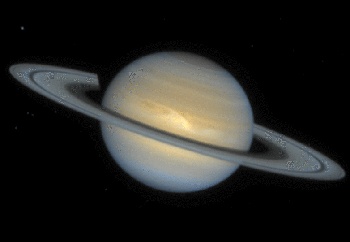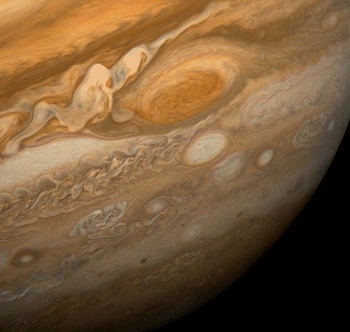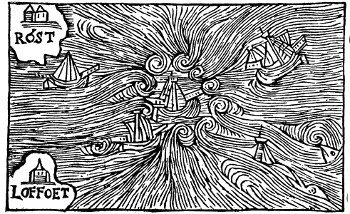The Great Red Spot
November 22, 2013
Possibly the most famous spot is the indelible one imagined by
Lady Macbeth in
Shakespeare's Macbeth.[1] I must confess that in the past
decade, having been involved with a need to make
high temperature electrical connections, I've read many more
spot welding articles than
Shakespeare plays.
C.P. Snow, famous for his "
Two Cultures" lecture, would not approve.

Out, damned spot!
The sleepwalking Lady Macbeth (detail), oil on canvas, 1784, by Henry Fuseli (1741-1825).
In Shakespeare's plays, the audience not only sees a character's actions, but it understands the character's motivation, as well.
(Via Wikimedia Commons.)
Astronomy deals more with dots, the appearance of
stars in
telescope eyepieces and on
photographic plates and
digital images, than spots, with some exceptions. The many classical
nebulae, some of which were known from
antiquity, were more spots than dots. The
French astronomer,
Charles Messier cataloged about a hundred such objects, most of which are now known to be
galaxies. The term,
nebula, now refers to just
interstellar dust clouds.
Closer to
home, there are some huge spots found on some of the
gas giant planets.
Saturn is best known for its
prominent rings, which were much more famous before the discovery that
planetary rings are common in our
Solar System; but, Saturn also has an unusual atmospheric feature called the
Great White Spot.
The Great White Spot is not a persistent object; rather, it's the name given to
periodic storms in
Saturn's atmosphere that are apparently caused by a
thermal instability linked to variable
insolation in Saturn's "
seasons." These occur with an approximate 28.5
year periodicity, when Saturn's
northern hemisphere is tilted towards the
Sun (Saturn's
orbital period is 29.46 years), and they start as small spots which expand to often encircle the entire planet.

Saturn's Great White Spot, as imaged on December 1, 1994 by the Hubble Space Telescope.
(Image by Reta Beebe (New Mexico State University), D. Gilmore, L. Bergeron (STScI), and NASA/ESA, via Wikimedia Commons.)
The Great White Spot was discovered in 1876 by noted
American astronomer,
Asaph Hall, who used it to infer Saturn's
rotational period, now known to be 10.57 hours. This observation was aided by the fact that the storm was especially prominent at that time. This may explain why it was not noticed at an earlier time, although the first astronomical observations by telescope were done more than two centuries prior to this by
Galileo in 1609.
Much more impressive than Saturn's Great White Spot is
Jupiter's Great Red Spot. Unlike Saturn's Great White Spot, which is a periodic phenomenon, the Great Red Spot is persistent. Although the feature might not be permanent, it's been observed continually since 1878. It was noticed by
Cassini, famous for his
detailed observations of Saturn's rings, as early as 1665.
The Great Red Spot, which is as wide as three
Earth diameters,
rotates counterclockwise with a period of about six Earth days. It does change size and shape, but it gives no indication that it might vanish. As a
gas giant, the
atmosphere of Jupiter consists mostly of
hydrogen and
helium in about the
same proportions as those of the Sun; namely, 74.9% hydrogen and 23.8% helium. Other detected elements are
water,
methane,
hydrogen sulfide and
ammonia. What exactly gives the Red Spot its color is unknown.

Voyager 1 image of Jupiter's Great Red Spot, February 25, 1979.
The larger white spot below the red spot is about the same size as the Earth.
(NASA/JPL image, via Wikimedia Commons.)
The persistence of the Great Red Spot has been a mystery. Now,
Pedram Hassanzadeh, a
postdoc at
Harvard University, and
Philip Marcus, a
professor of
Mechanical Engineering at the
University of California, Berkeley, have done
computer simulations for a
model that explains its longevity.[2-3] A report on their work is scheduled for the
American Physical Society's 66th Annual
Division of Fluid Dynamics Meeting to be held in
Pittsburgh, Pennsylvania, at the end of November.[4] The model explains, also, persistent
ocean eddies and the properties of
vortices responsible for the formation of stars and their planetary systems.[2]
The
turbulence and
waves inside and around the Red Spot should extract
energy and cause it to
dissipate, as should its
radiant energy. Some models show that smaller vortices can merge into the Red Spot vortex to keep it going, but there's little evidence that this alone is enough.[2] The model proposed by Hassanzadeh and Marcus is a more complex, high resolution,
three-dimensional model that goes beyond the other models to include
vertical flow.[2]
Says Hassanzadeh,
"In the past, researchers either ignored the vertical flow because they thought it was not important, or they used simpler equations because it was so difficult to model."[2]
As the new model shows, inclusion of vertical flow is important, since vertical flow transports relatively hot gases from above the Red Spot and cooler gases from below to the spot's center, restoring lost energy.
Radial flow to the spot's center is also predicted by the model, adding more energy. This same vertical flow model might also explain the longevity of vortices in Earth's oceans, such as those formed near the
Strait of Gibraltar, and also the million-year vortices of
interstellar material responsible for star formation and the formation of their planets.[2]

Detail of a 1555 woodcut of a maelstrom, an oceanic vortex, by Olaus Magnus.
(From book two of "Historia de gentibus septentrionalibus," via Wikimedia Commons.)
The model extends the life of the Great Red Spot by a factor of about a hundred from the conventional explanation,[3] but absorption of smaller vortices might be the factor responsible for the energy needed to further extend its life to the observed hundreds of years.[2]
References:
- Macbeth by William Shakespeare, Project Gutenberg.
Doctor of Physicke: What is it she do's now? Looke how she rubbes her hands.
Wayting Gentlewoman: It is an accustom'd action with her, to seeme thus washing her hands: I haue knowne her continue in this a quarter of an houre.
Lady Macbeth: Yet heere's a spot.
Doctor of Physicke: Heark, she speaks, I will set downe what comes from her, to satisfie my remembrance the more strongly.
Lady Macbeth: Out damned spot: out I say.
- A question for Jupiter, American Physical Society Press Release, November 14, 2013.
- Pedram Hassanzadeh and Philip Marcus, "On the Unexpected Longevity of the Great Red Spot, Oceanic Eddies, and other Baroclinic Vortices," Abstract No. L32.00002 of Session L32 of the 66th Annual Division of Fluid Dynamics Meeting, Pittsburgh, Pennsylvania, November 25, 2013.
- Web Site of the American Physical Society 66th Annual Division of Fluid Dynamics Meeting, Pittsburgh, Pennsylvania, November 24 - 25, 2013.
Permanent Link to this article
Linked Keywords: Lady Macbeth; Shakespeare; Macbeth; decade; high temperature; electrical connection; spot welding; Shakespeare's plays; C.P. Snow; The Two Cultures; sleepwalking scene; Out, damned spot!; oil painting; oil on canvas; Henry Fuseli (1741-1825); audience; character; motivation; Wikimedia Commons; astronomy; star; telescope; eyepiece; photographic plate; digital imaging; nebula; antiquity; French; astronomer; Charles Messier; Messier object; catalog; galaxy; interstellar dust cloud; Earth; gas giant; planet; Saturn; rings of Saturn; planetary rings; Solar System; Great White Spot; periodic function; storm; Saturn's atmosphere; convective instability; thermal instability; insolation; season; year; northern hemisphere; Sun; orbital period; Hubble Space Telescope; New Mexico State University; Space Telescope Science Institute; STScI; NASA; ESA; American; Asaph Hall; rotational period; Galileo Galilei; Jupiter; Great Red Spot; Giovanni Domenico Cassini; Cassini Division; diameter; rotation; counterclockwise; gas giant; atmosphere of Jupiter; hydrogen; helium; Sun chemical composition; water; methane; hydrogen sulfide; ammonia; Voyager 1; Pedram Hassanzadeh; postdoctoral research; postdoc; Harvard University; Philip Marcus; professor; Mechanical Engineering; University of California, Berkeley; computer simulation; model; American Physical Society; Division of Fluid Dynamics; Pittsburgh, Pennsylvania; ocean; eddy; vortex; vortices; turbulence; wave; energy; dissipation; radiant energy; three-dimensional space; vertical direction; fluid dynamics; flow; equation; radial; Strait of Gibraltar; cosmic dust; interstellar material; woodcut; maelstrom; Olaus Magnus; A Description of the Northern Peoples; Historia de gentibus septentrionalibus; On the Maelstrom and the Tides of the Ocean.